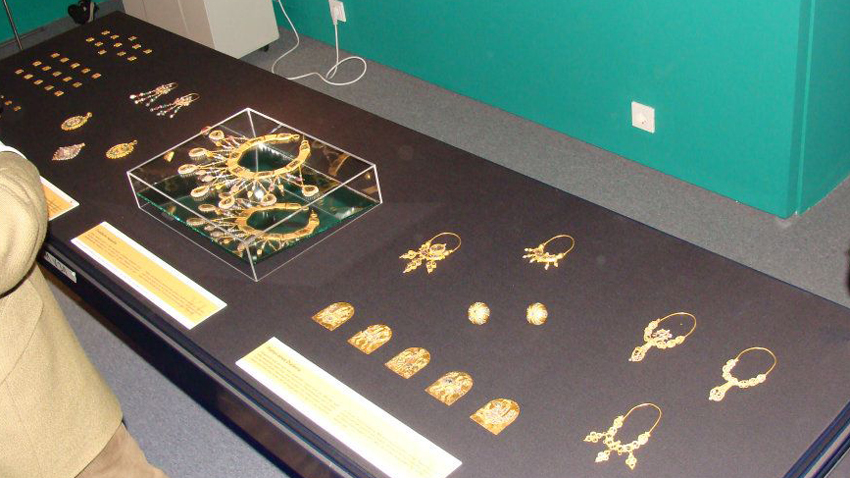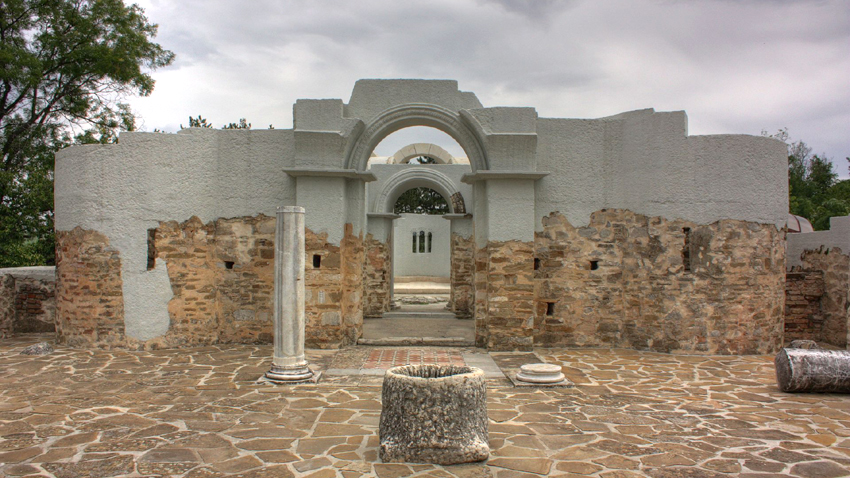Veliki Preslav is the second capital of the First Bulgarian Kingdom, Pliska being the first. After the year 893, when it was proclaimed capital of Bulgaria, it became the seat of the first Bulgarian literary school. The town remained a leading literary and cultural centre for Bulgaria and the entire Slavic world where prominent medieval writers and scientists lived and worked.
During the Bulgarian Middle Ages, Veliki Preslav was one of the most beautiful and majestic towns in Southeastern Europe. Numerous monuments of Pliska and Preslav culture have been preserved to this day. The town was surrounded by thick walls of white stone. Safe behind them there was an inner city where there was a palace and a royal residence.

The most valuable finds from the period include a ceramic icon of St. Theodore Stratelates, the Preslav gold treasure and the ceramic iconostasis from the Royal Monastery, a chess piece (a pawn) and many others. They are on display at the Museum of the Veliki Preslav National Reserve of History and Archaeology amidst the ruins of the old Bulgarian capital. The archaeological excavations spanning over a century have shown that Veliki Preslav was planned and built by Bulgarians as a magnificent centre, a match to the Byzantine capital Constantinople. Proof of this are the discoveries made by Ass. Prof. Stoyko Bonev who has been studying the remains of the old town for close to 40 years. Here is Prof. Stoyko Bonev about the palace:

“This is one of the most difficult archaeological sites from the Bulgarian Middle Ages. The foundations go deep down into the ground and the stones the building is constructed of weigh 300-400 kilograms each. The foundations and the walls are two meters thick, the walls are blockwork, cemented with mortar. This structure of such massive proportions, which was once truly grand, is a rarity in our lands and it is a true masterpiece of Bulgarian architecture. It was effusively decorated with stone figurines, painted pottery and stained glass. It is obvious that this was not the home of any ordinary man, that it was erected for people of very high social standing. What astounds me are the stone slabs demonstrating very high stone cutting skills – in fact I wouldn’t call it stone cutting at all but art, stone carving. These are things that are not to be seen in any other building. And these were all the personal chambers of the ruler.”

The history reserve spreads over an area of over 500 hectares and cannot be seen in just one day. Visitors admire the fortress’ iron gateway and the white walls of the “Golden” church which has been conserved as a reminder of the cultural life that thrived in the first Bulgarian capital after the conversion to Christianity. The other temple – the palace church – has been restored partially. Here is more from Plamen Dimitrov, Director of the Veliki Preslav National Reserve of History and Archaeology Museum.
“Work is already underway on a project that goes back many years, for the restoration and conservation of two of the sites at the reserve – the palace church and the royal basilica. Restoration work is planned and their walls will be raised up to a given height so as to show what the two buildings once looked like. Work is also underway to create an information media system that will enable tourists to obtain real-time information about all of the services available. Another landmark in the centre of Veliki Preslav is the Holy Apostles Peter and Paul church, built in a National Revival-time style. Peter and Paul are the latter day patron saints of Veliki Preslav and father Nikolay – priest at the church – is always ready to tell guests legends and stories from the times the church was built.”
English version: Milena Daynova
It was in the vicinity of one of the Devnya karst springs in the Roman province of Lower Moesia (Moesia inferior) that the Roman Emperor Trajan (98-177 AD) stopped with his army. His sister Marcia sent her maid to fetch water, but..
In 2000 archaeologist Dr. Georgi Kitov and his team discovered, in the Roshava Chuka mound in the vicinity of Alexandrovo village near Haskovo, a Thracian tomb dated to the 4 th century BC. The high artistic value of the frescoes and the..
The feet of Thracians, Greeks, Macedonians, Romans, Illyrians, Celts, and Egyptians walked along the marble slabs of the polis square. Streets branched towards temples, ateliers and shops, while the forum was the place to look for justice and to..

+359 2 9336 661
